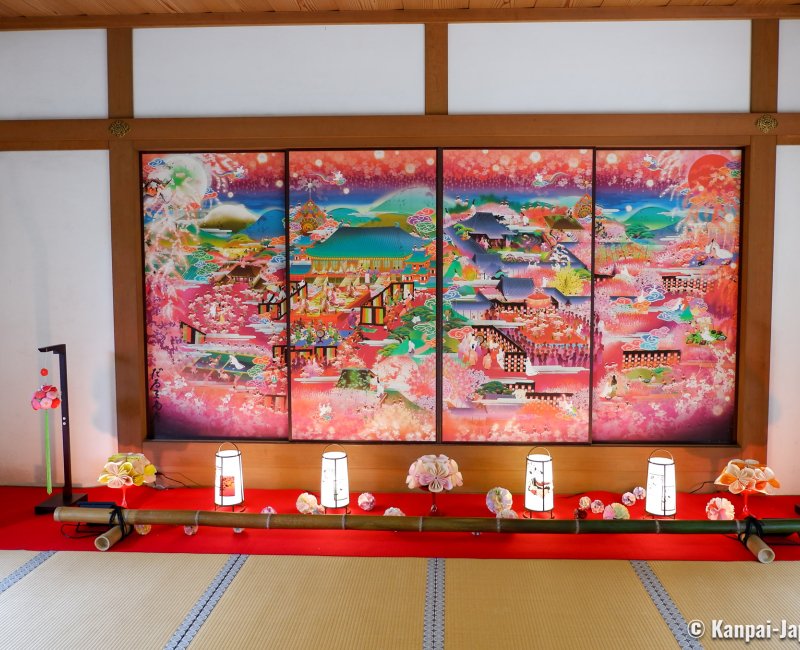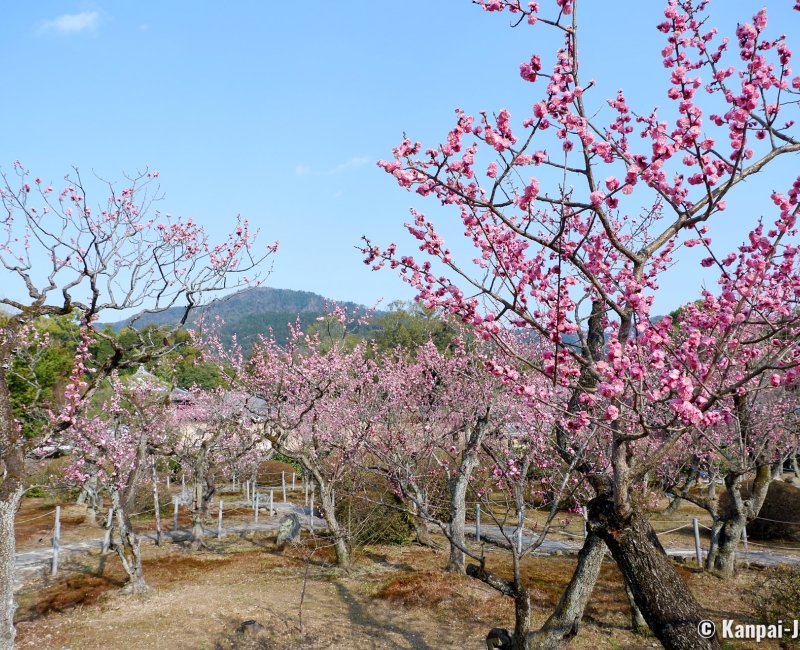Zuishin-in
Late Plum-Trees in Yamashina
Zuishin-in is a Buddhist temple of the Shingon school located in Yamashina, in Kyoto’s easternmost side. Ono no Komachi, a famous poetess of the Heian period, is celebrated here with a selection of remarkable painted artworks. Furthermore, its garden Ono Baien is a beautiful plum-tree blossom viewing spot in the early days of spring.
The great Somon gate is undergoing renovation works until the end of March 2025. The temple remains open to the visit as usual.
An ancient rural village, Yamashina is now a quiet residential ward located in the east of Kyoto. It is home to a few pearls mostly forgotten by the touristic crowd, such as Zuishin-in, a temple well worth the detour and not so remote from the city center thanks to a nearby subway 🚇 station. March is probably the best time to visit so as to enjoy ume plum-trees blooming season.

Temple related to poetess Ono no Komachi
Monk Ningai (951 – 1046), a disciple of Kobo Daishi (774 - 835) the founder of Shingon Buddhism in Japan, established Gyuhizan Mandara-ji temple in the Ono area, in the east of the former imperial capital Heian-kyo in 991. It will later become Zuishin-in.
As for many temples and shrines in Kyoto, most of Zuishin-in’s original buildings were destroyed during the multiple civil wars of the Japanese Middle-Ages. Consequently, most of the current pavilions date back to the early Edo period (1603 - 1868).
The temple’s large rectilinear walking paths are inviting visitors to reach the Kuri pavilion serving as a reception office. Walking into Zuishin-in’s buildings is more interesting than just contemplating their architecture from outside. Several artworks are indeed displayed, such as:
- Authentic traditional paintings on fusuma panels, by the prestigious Kano School; and,
- Various objects in connection to poetess Ono no Komachi (小野小町).

Ono No Komachi (825 - 900) is a woman of letters of the Heian period (794 - 1185) whose fame was due equally to her talent in writing waka poetry and her exceptional beauty; and the story of her love life is laced with legends. Acknowledged in her lifetime, Komachi is one of the Rokkasen, the 6 immortal poets of the 9th century, and also one of the Sanjurokkasen, the 36 Immortals of Poetry selected among the Japanese poets of the Heian Period.
Ono no Komachi has become a prominent figure of Japan’s history and is integral part of its folklore, the Shinkansen 🚅 trains serving Akita Prefecture (where she was from) are even named after her. She is one of the characters of Kyoto’s Jidai Matsuri parade, and also the main protagonist of several classical Noh dramas, the most famous being Kayoi Komachi.
At Zuishin-in, the permanent collection is a tribute to her graceful beauty, in a very feminine and colorful universe, with hues of pink, red and white. The temple’s Buddhist altar is protected by 4 sliding panels painted by Daruma Shoten, a contemporary artists duo. Their original paintings, radiant, bright and detailed, is named in Japanese 極彩色梅匂小町絵図 (Gokusaishiki Umeiro Komachi ezu) and illustrate the poetess’ life.

200 ume blooming in mid-March
In mid-March, Zuishin-in’s Ono Baien garden specifically opens for the blooming of plum-trees. The lucky visitors can walk through a little wood of about 200 blooming ume plum-trees. Prunus usually bloom during February, however Zuishin-in’s trees, called Hanezu no Ume, bloom later, about in the same time frame as the cherry trees.
This flower-viewing spot is enjoyable as it is not as busy as the usual temple in Kyoto. Immersed in a peaceful atmosphere, flowers amateurs can take their time to admire the rugged yet delicate plum-tree branches; the seasonal viewing of ume blossoms was by the way more popular than the sakura 🌸’s during the Heian period.
Autumn and its flamboyant koyo 🍁 foliage is also a good time to enjoy Zuishin-in, and discover its pavilions opening on a small pond, Shinji-ike, surrounded by beautiful maple trees.


